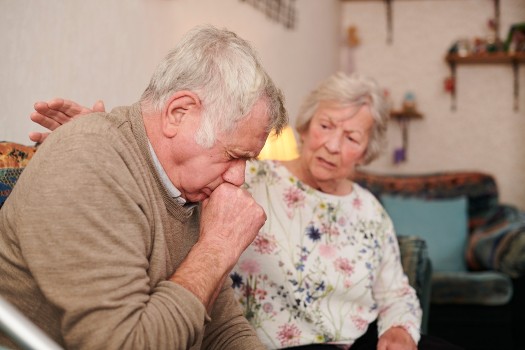Patients who are shielding from coronavirus (Covid-19) are being removed from the list without GPs being notified or having spoken with them first, according to charities.
People with forms of cancer, liver disease and severe asthma are thought to be among those affected.
Asthma UK said patients with severe asthma and lung disease had been told they had been dropped from the shielding list, without their GP having been notified.
It described the situation as an ‘utter mess’ and said it is seeking ‘urgent clarification’ from the NHS.
The British Liver Trust also said some patients had been sent a text by the Government’s shielding service telling them to stop shielding, yet their doctors had not had a chance to speak with them first.
The charity said it believed there has been a ‘blip’ with the texting service, because the messages should not be sent out until the patient has consulted with their doctor.
It has complained to the Department of Health and Social Care and said that it is advising patients who receive a text to wait until they have spoken with their clinician before taking any action.
NHS England’s medical director of primary care Dr Nikki Kanani said on Twitter that the organisation was unaware of the issue but is looking into it further.
As of last week, 2.2 million people in the UK had been identified as being clinically extremely vulnerable and therefore told to shield themselves against the virus, by not leaving their home for 12 weeks, until at least 30 June.
Collectively, GPs have removed more than 107,000 patients from the shielding list so far who were thought to be wrongly added in the first place,
Commenting on the revelation that patients are being told to stop shielding, without having spoken to their doctor first, Vanessa Hebditch, from the British Liver Trust, told the Guardian: ‘The Government has said that individual doctors can use their clinical judgment and take people off the shielding list.
‘I’ve had assurance from the Department of Health and Social Care that nobody should have received a text as the first piece of communication. Their consultant should have written to them or rung them.
‘Some people who have received this message haven’t had those conversations, so clearly this was a blip. Our advice, if you do receive a text, is to continue to shield until you have received direct advice from your own clinician.’
In a statement, Asthma UK said: ‘We have heard from people with severe asthma and lung disease who have been alarmed about receiving official text messages with no explanation, dropping them from shielding. Some are saying their GP had also not been told. This is an utter mess.
‘We are requesting urgent clarification from the NHS and call for patients and charities who provide advice and support to be involved in planning any future communication. We also strongly recommend that people’s GPs are kept informed about what their patients are being sent.’
In a tweet to GPs concerned about not being told when patients are removed from shielded lists, NHS England’s Dr Kanani said: ‘We are not aware of this but are trying to find out more.’
A Government spokesperson said: ‘The Government is committed to supporting the clinically extremely vulnerable and all decisions about whether someone should shield are clinically led.
‘In some cases, clinicians have advised that a patient no longer needs to shield themselves from coronavirus. Where this is the case, the person will be informed by their clinician that they are not on the shielded patient list. NHS England has issued guidance to clinicians to enable them to communicate this.
‘Those advised that they no longer need to shield may still access forms of support including the NHS Volunteers network, and will retain their supermarket priority delivery slots.’
Pulse October survey
Take our July 2025 survey to potentially win £1.000 worth of tokens














